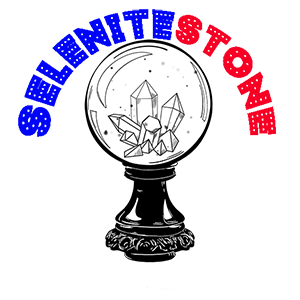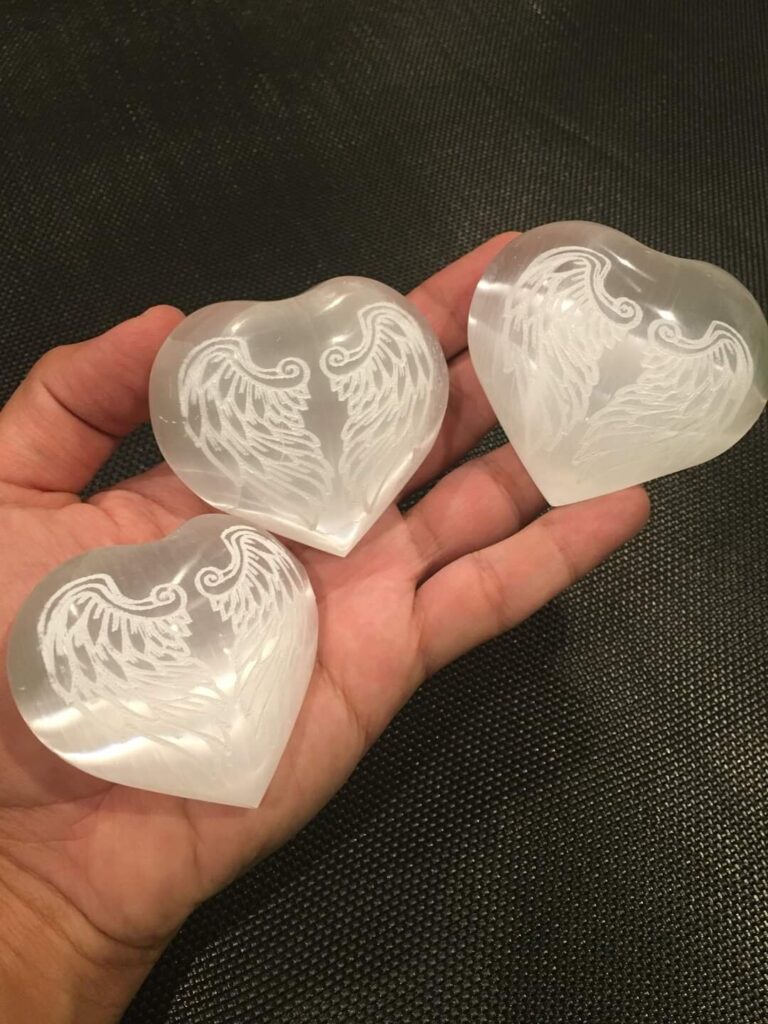History and origins of selenite
While the term selenite initially referred to the transparent type, it is now now used to describe the striated, fibrous version known as satin spar (which is also a variety of gypsum). People have gone so far as to claim that satin spar isn’t actual selenite, and while there is a tiny difference, they’re chemically the same—they’re the same type of stone.
Certain formations are employed for distinct purposes. Angel wing selenite (or fishtail selenite), for example, has a feathery look and is frequently used to connect with guides and angels.
She claims that historically, huge, thin sheets of selenite (also known as windowpane selenite) were used for windowpanes and smaller sheets for eyeglasses.
Selenite can be found all over the world, but it is most common in the United States, Australia, and Greece. The most famous deposit of selenite, according to Leavy, is in a cave approximately 1,000 feet under a mountain in Chihuahua, Mexico. the name selenite originally referred to the transparent variety, nowadays, it can also refer to the striated, fibrous version called satin spar (which is also a variety of gypsum). “People have gone so far as to say satin spar isn’t real selenite, and although it’s true that there’s a subtle distinction, they’re chemically the same—they’re the same type of stone,” Leavy adds.
She notes there are some specific formations that are used for certain things. For example, angel wing selenite (or fishtail selenite), has a feathery kind of appearance and is often used for connecting with guides and angels.
Historically, large, thin sheets of selenite (sometimes called windowpane selenite) were used for windowpanes, and smaller sheets were used as eyeglasses, she says.
Selenite can be found all over the world, particularly in the U.S., Australia, and Greece. Most famously, Leavy adds, there’s an incredibly large deposit of selenite in a cave nearly 1,000 feet under a mountain in Chihuahua, Mexico.
Ways to use selenite:
Selenite wands are exactly what they sound like: a stick or “wand” of selenite. It’s often actually satin spar, which, as aforementioned, is a variety of gypsum similar to selenite. Leavy notes there are selenite wands that come in sticks or blades, as well as wands that are polished into shapes.
“There are long slender ones with very sharp points at one end that are used for reflexology, and there are some with smoothed rounded ends that are touted as massage wands,” she explains. To that end, she adds that selenite can be quite splintery and porous, so she doesn’t recommend using it with massage oils, or even the oils of the skin.
“I would not use them for massage or direct contact with the skin that way—it’s much better to use them more energetically,” she says, adding, “Even the cut, polished, and shaped wands can be used the same way as the rough blade or stick, to sweep energy from the aura or energy field.
Selenite crystals:



